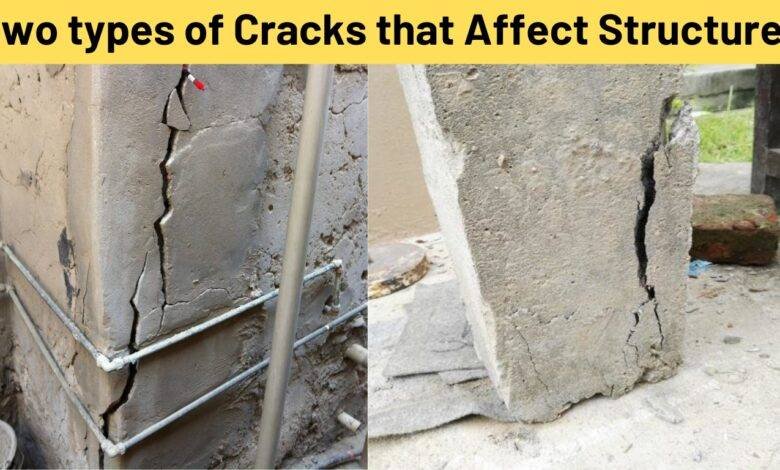Common types of Concrete Cracks: Prevention and Maintenance

Common types of concrete cracks: Prevention and maintenance
Two types of cracks that affect structures
Whatever the structures may be, the construction work should be carried out with utmost care from the beginning to the end.
Concrete Cracks
Although the construction work is carried out with great care from the beginning to the end of the structures, it is often customary to have cracks in the walls or floors. There are a variety of unknown causes of cracks that are seen as technical glitches. It is known that the defects in the various construction works, from the construction of the top floor to the installation of windows, including the laying of the foundation, appear as cracks over time.
Two types
Construction engineers refer to cracks as two common types. They have been classified into two types, namely, cracks with an expanding nature called ‘active crack’ and ‘non-expandable cracks’ called ‘dormant crack’.
Active Crack
Experts note that ‘active crack’ in building cracks is something that needs to be addressed immediately. The reason is that the ‘active crack’ caused by the defects in the construction work has the potential to cause definite damage to the building. A crack on a small scale will eventually become larger and the part of the building involved will collapse.
Reasons
If the above cracks are detected early, the problem can be fixed immediately. The size of the crack can be determined by its depth and width and the impact it can have. Deficiencies in the construction of walls, lack of use of compact ‘billing’ methods while laying the floor level, leaving the load-bearing capacity of the soil unaccounted for properly, desilting the well and constructing a building on top, not making foundation structures suitable for the nature of the soil and ‘settlement’ of the land. Experts have said that an ‘active crack’ can be caused by factors such as the earth’s lower ground level, which supports the foundation of the structure.
Ways to find a solution
For most cracks, it is customary to inject a chemical called ‘epoxy resin’ into a method called ‘crack injection method’. If this method is not of much use, it can be corrected using modern alternative construction techniques or chemical techniques depending on the part of the building involved. This means that methods such as the construction of foundation-bearing pillars and filling of special concrete will be followed called ‘Foundation Pinning’. Whatever method you follow, it is safe to do the work right from the beginning.
Dormant crack
It is known that cracks that do not have an expandable character, known as the Second Dormant Crack, do not pose a great risk to buildings. These cracks are as large as they were when we first saw them.
However, it should be noted that there is a possibility of moisture or water passing through the cracks. Because of this, there may be other vulnerabilities. Suitable chemical products such as ‘epoxy resin’ are now available in the market for these types of Concrete Cracks.
They can be used on the advice of the construction engineer to protect the building.
| Latest Jobs | Click Here |
| Online Civil Store | Click Here |
| Follow on Facebook Page | Click Here |
| Join Facebook Group | Click Here |
| Click Here | |
| Join Telegram Channel | Click Here |










